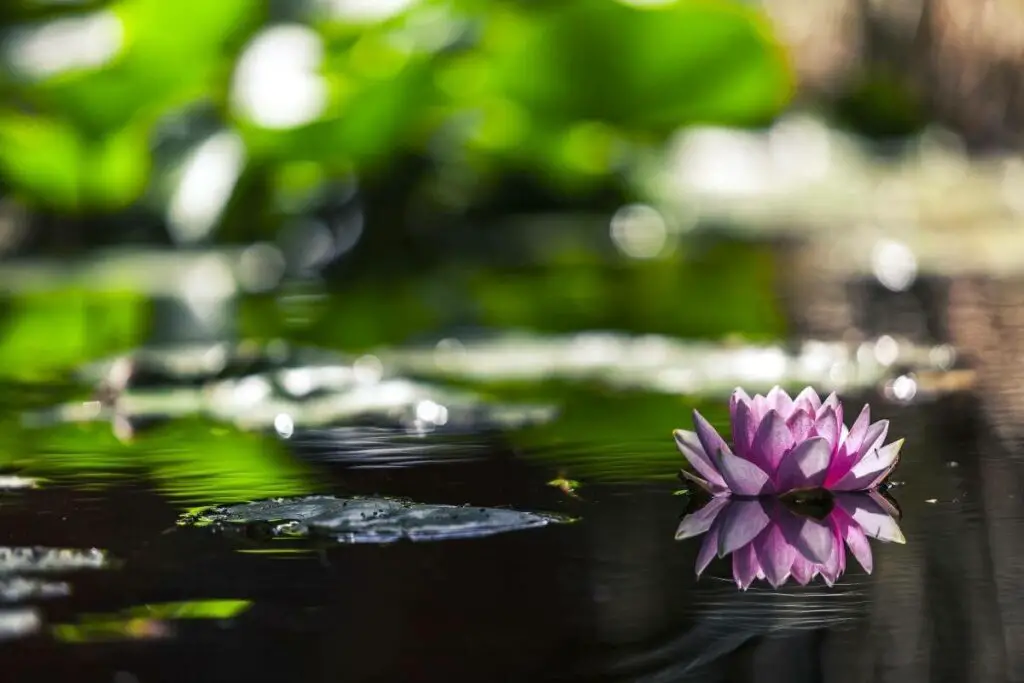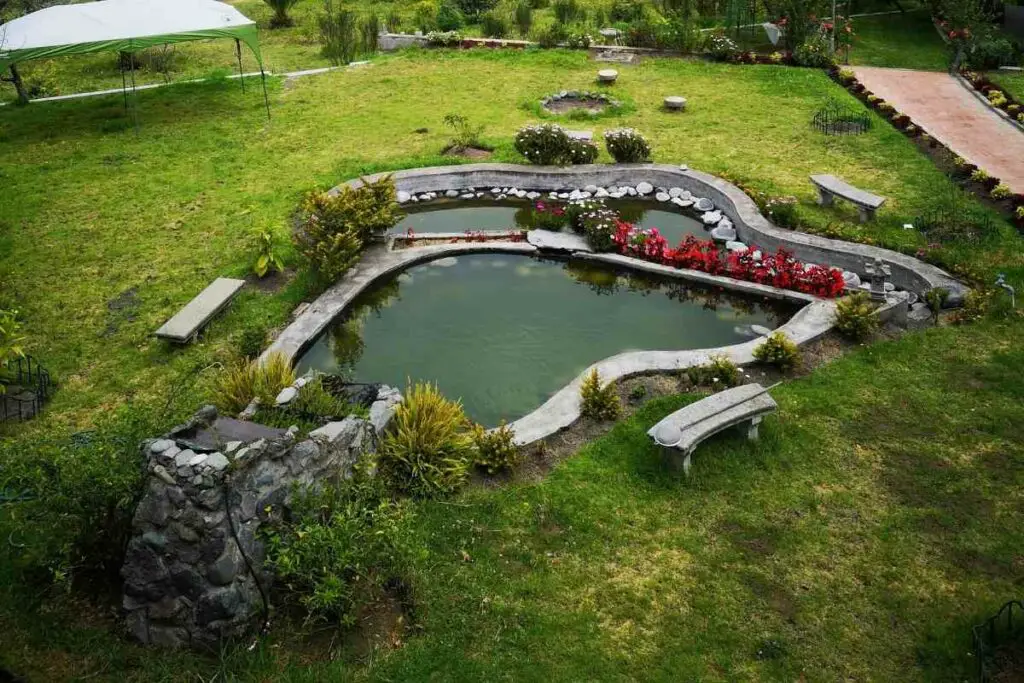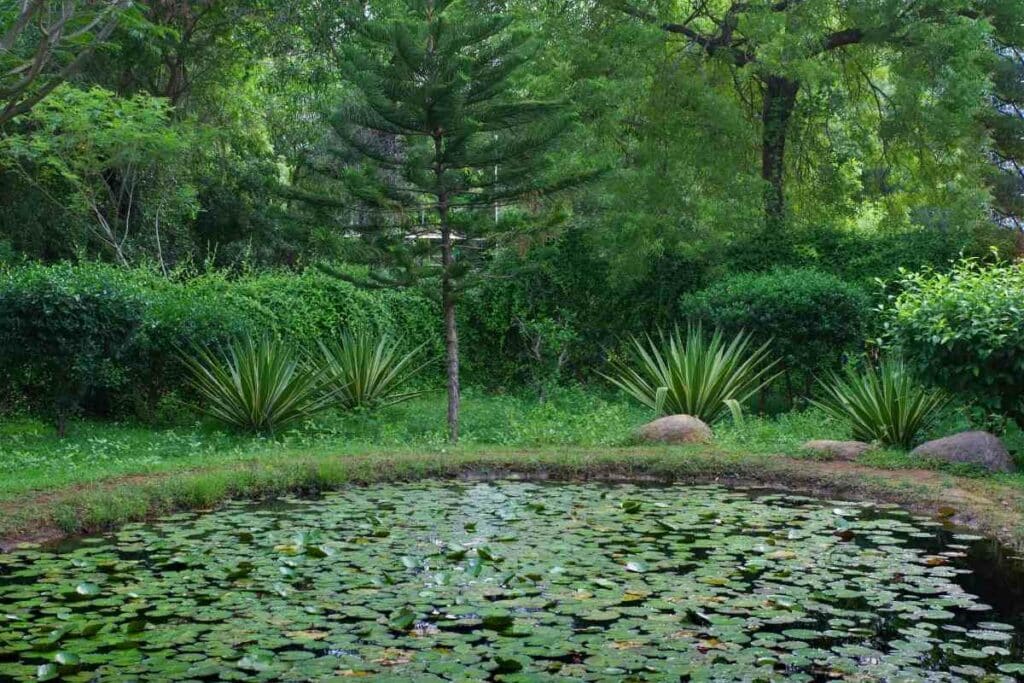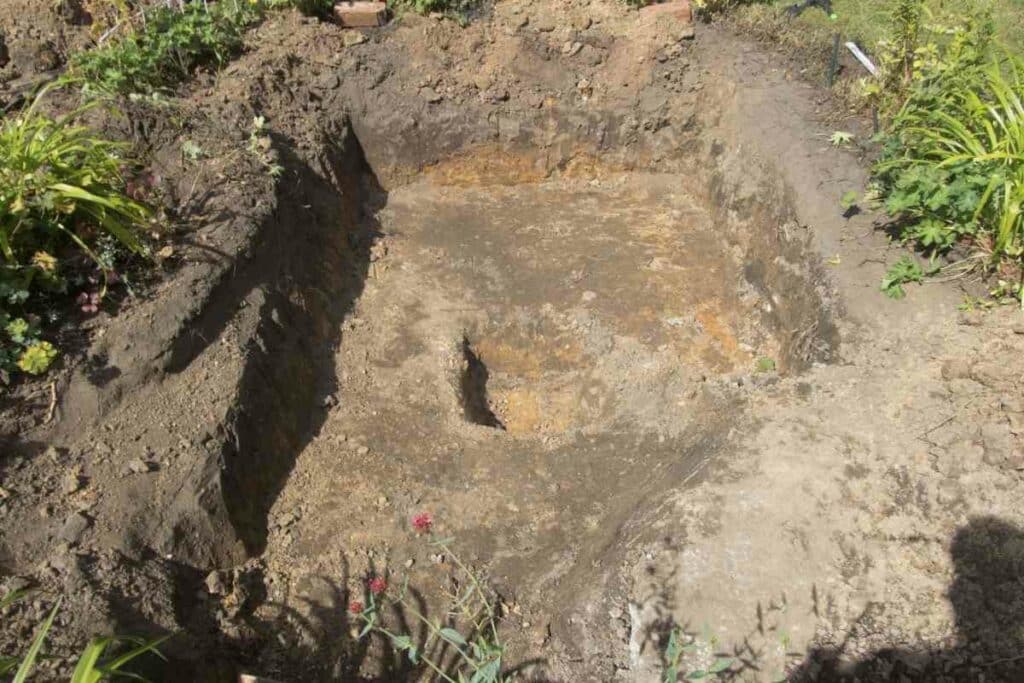Japanese gardens have bridges because they help you move from one point to another. From a spiritual viewpoint, these structures enable an individual to ‘travel’ from the mortal world to a blissful place, that’s the afterlife.
Japanese bridges are usually built using different materials, with their shapes and size varying according to the owner’s preferences.
The Importance of Red Bridges in Japanese Gardens
The arched red bridge, also called the Guzei, is the most popular in Japanese gardens.
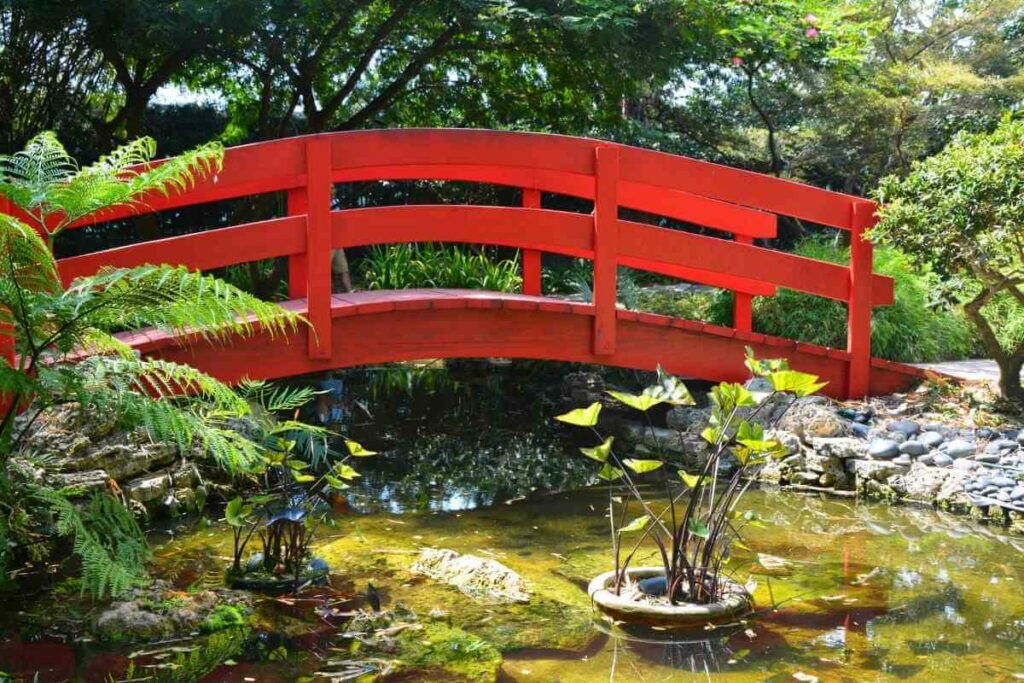
Red is an important color in Japan because it represents wisdom.
This color also encourages you to reject your attachment to material things as you walk across the bridge.
Wonderful Color: It also promotes spiritual change and positive growth.
Type of Japanese Garden Bridges
Japanese garden bridges can be made from many materials such as:
Wood
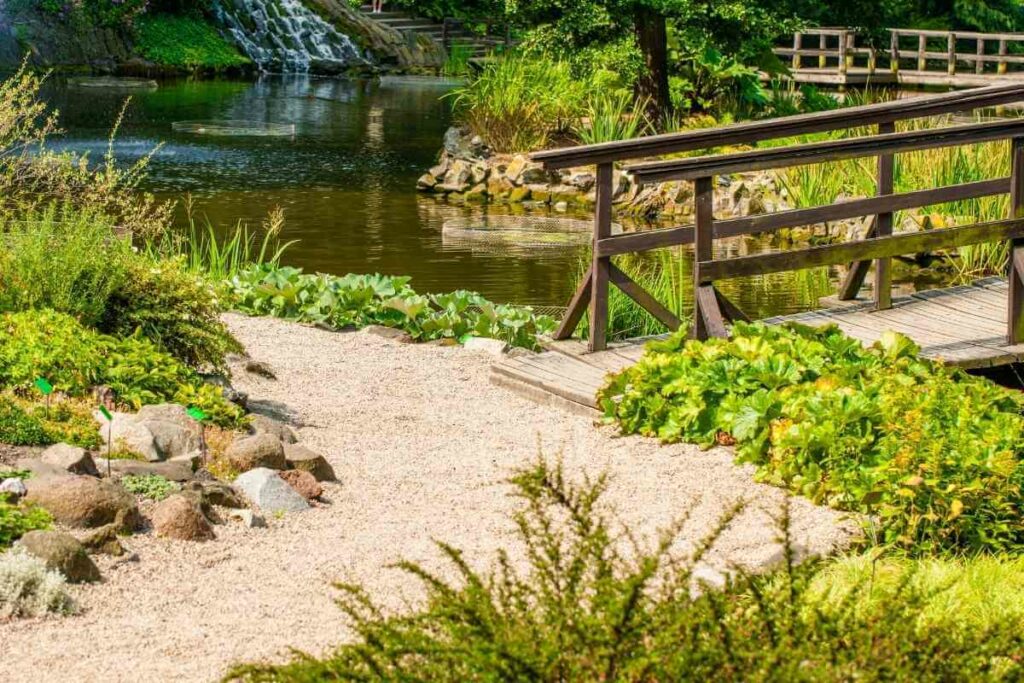
Wood is the most popular material because it is affordable and easy to use.
Wooden bridges can be made of hardwood bamboo, wooden boards, and railway sleepers.
These are durable and can withstand all weather elements.
Stone
Stone is also a common material used for making Japanese bridges.
The blocks of stone can be rectangular, flat, or circular.
Ensure that you support the stone blocks with steel or wood to keep the structure upright.
Concrete
Concrete bridges require you to have professional bricklaying skills to construct.
However, they result in robust and long-lasting structures.
Be Creative: The benefit of concrete is that you can shape it in any way you like.
How to Make a Japanese Garden Bridge
Here is what you need to make a Japanese bridge.
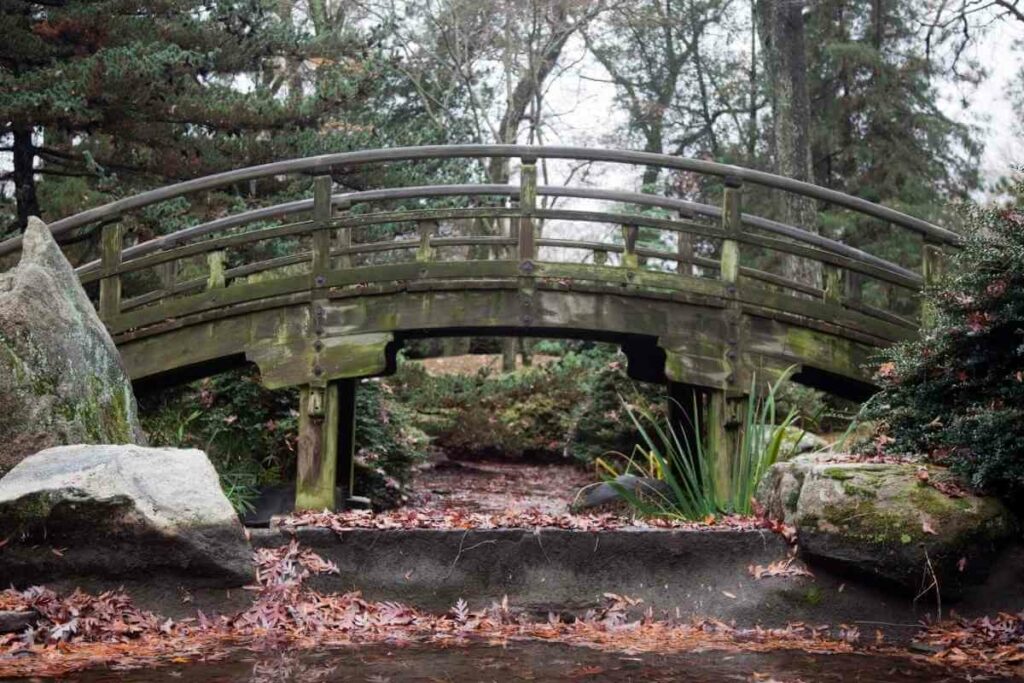
Materials
- Three arched pressure-treated pieces of wood
- Wooden planks
- Cement
- Measuring tapes
- Drill
- Screws and bolts
- Nails
- Hammer
- Insulating coating
- Paintbrush
Procedure
- Choose the best location in your garden where you want to construct the bridge. After this, measure the width of the creek or valley.
- Purchase three pressure-treated solid pieces of wood that measure five inches longer than the width of the creek or valley. The pieces of wood should be arched.
- Place the wood pieces over the ground on the bridge’s construction site. Ensure that the wood details overlap both sides of the future bridge before removing them.
- Dig two furrows on either end of the bridge. You can use a shovel or a ground auger to do this. The furrows should be deep enough to support the bridge and its weight.
- Pour concrete into the furrows and allow it to dry entirely.
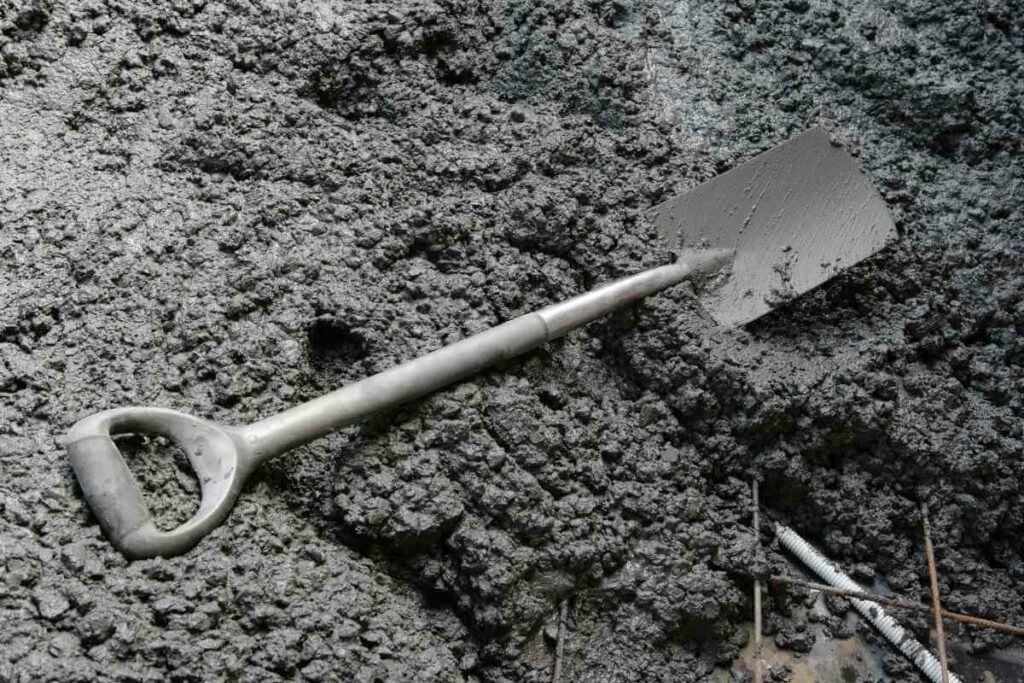
- Using the drill, make holes in the wood and the cement. Place bolts and screws in the holes and attach the wooden beams to the dried concrete.
- When the pieces of wood are tightly fixed in position, cover them with more wooden planks. Secure them to the structure with nails and a hammer.
- If you want to make the bridge more solid, apply a strip of cement in various junction points to fix the bridge more firmly into the ground.
- Coat the pieces of wood with a protective layer of insulating coating. This will maintain its appearance for a long time.
How to Select the Shapes and Design of the Bridge
Get a design of the bridge you want to have in your garden and print it on a big sheet of paper.
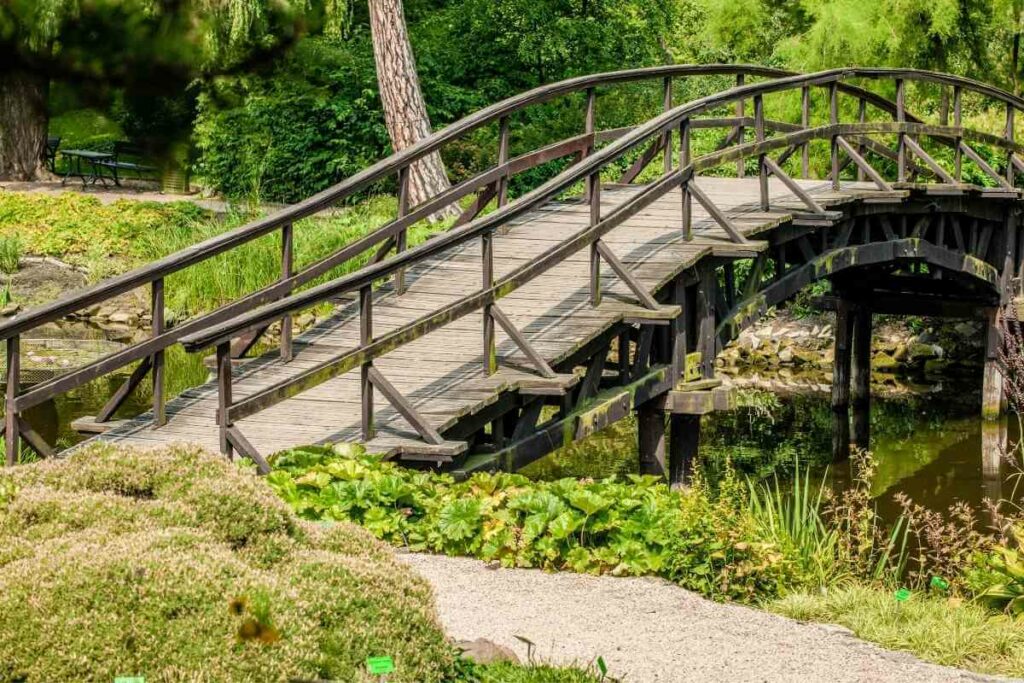
Then, cut off the shapes of the bridge and apply them to a picture of the place where you want to build your bridge.
This will help you know if the plan will fit in properly or not.
Mostly: You have to choose rectangular and arched designs. While the former is simpler, it can’t match the sophisticated and classic look of its arched counterparts.
Elements of Japanese Gardens
Beside bridges, Japanese gardens use pond streams, islands, and hills to generate artificial imitation of natural scenery.
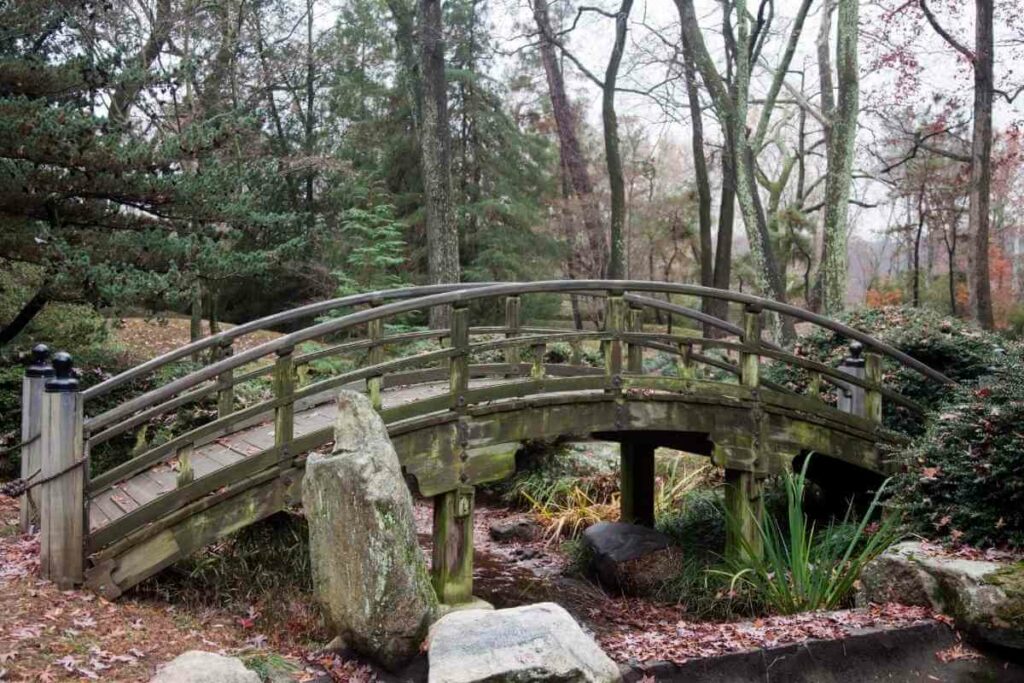
Here are some commonly used elements of Japanese gardens.
Stone, Sand, and Gravel
Stone has played a key role throughout Japanese history. Large stones symbolize mountains and hills.
On the other hand, small rocks and gravel line ponds and streams.
Ponds, Streams, and Waterfalls
Ponds constitute a significant element of Japanese gardens that represent water bodies such as lakes and seas.
They offer a home for carps that adds more color and life to your garden.
You can also use ponds for boating and other forms of enjoyment.
Islands and Bridges
Islands are another popular element of Japanese gardens.
They range in size, from small stone outcroppings to an extensive island big enough to support a building.
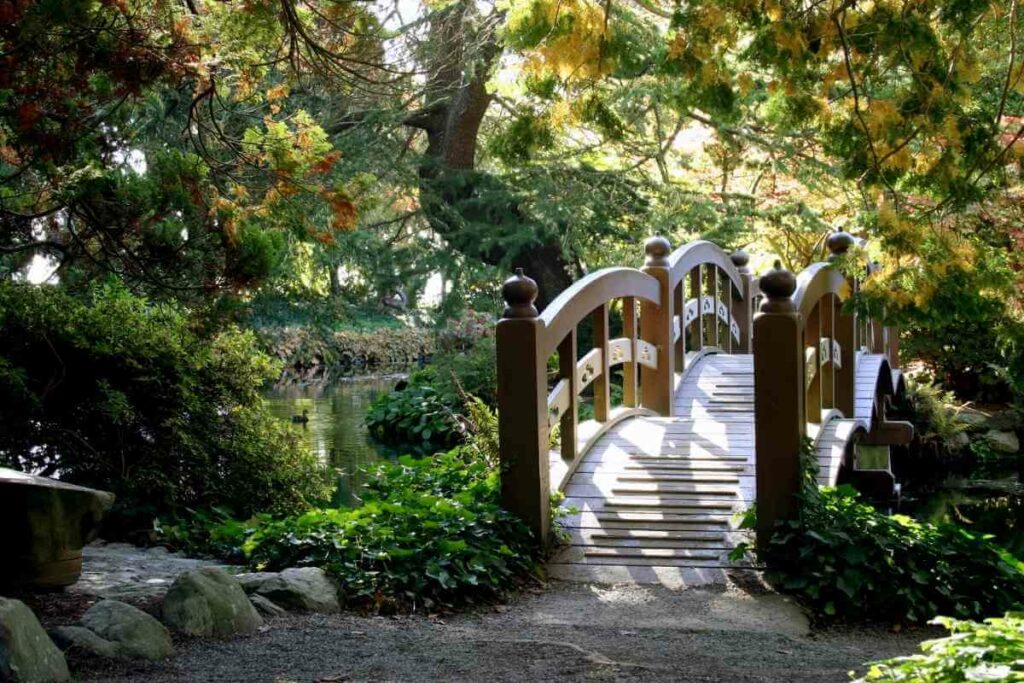
Bridges, as mentioned earlier, are used to connect islands and ponds. They are built of stone and wood.
Vegetation
Japanese gardens have different vegetation types, including flowers, trees, and shrubs.
Plants like cherry trees and maple are popular because of their seasonal appeal.
On the contrary, bamboo and pine represent beauty and are primarily used in cold winter months when other plants are dormant.
The arrangement of plants around the garden imitates nature, and great efforts are put in to uphold their visual appeal.
Learn How: Trees and shrubs get pruned regularly. During winter, straw insulates and protects the trees against the snow. On the other hand, Straw wraps reduce the risk of bug infestations.
Paths
Since the introduction of strolling and tea gardens, paths have become an integral Japanese garden element.
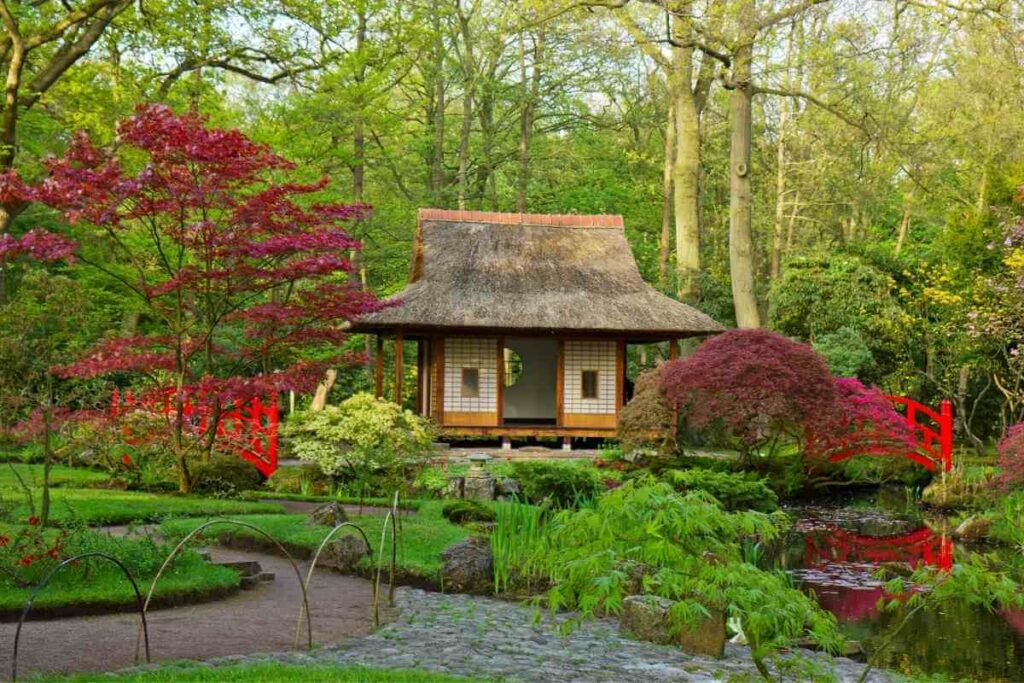
Strolling gardens have circular pathways made using:
- crushed gravel
- stepping stones
- and compacted earth
These are set up to afford visitors the best and controlled views of the garden.
Wrapping Up
Whether you believe in their spiritual significance or view them as an element of beauty, bridges are an integral part of Japanese gardens.
For the religious, they present a transition from the mortal world to the afterlife.
For others, they streamline movement from one garden area to another.
Regardless, these structures are something to behold. You can’t have a Japanese garden without a bridge.
In Case You Missed It
- What Should I Put in the Bottom of My Wildlife Pond?
- Backyard Oasis With Pool: Creating a Relaxing Retreat in Your Backyard
- How to Find Pond Leak (Quick Method to Find the Leaks)
- Pool Ledge Lounger – Complete Buyers Guide
- Do Garden Ponds Overflow When It Rains
- How To Fill A Pond With Water (Complete Guide)

